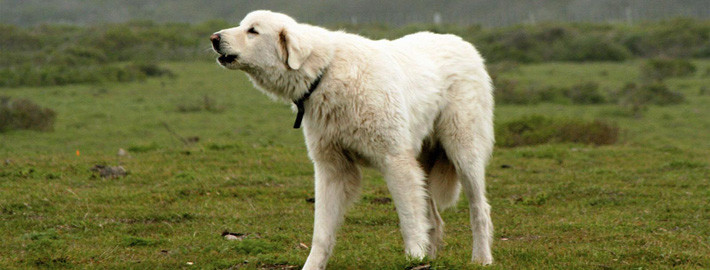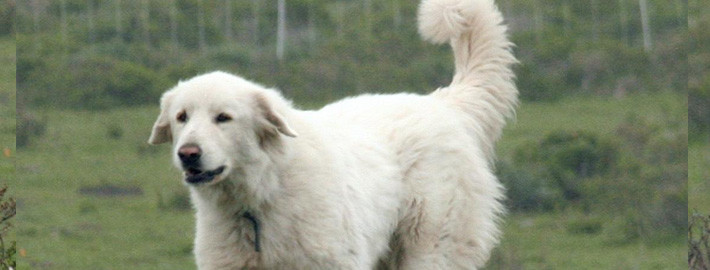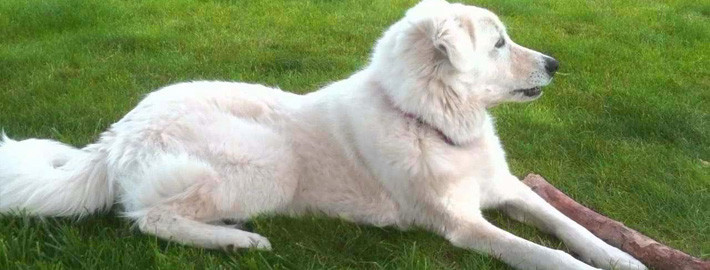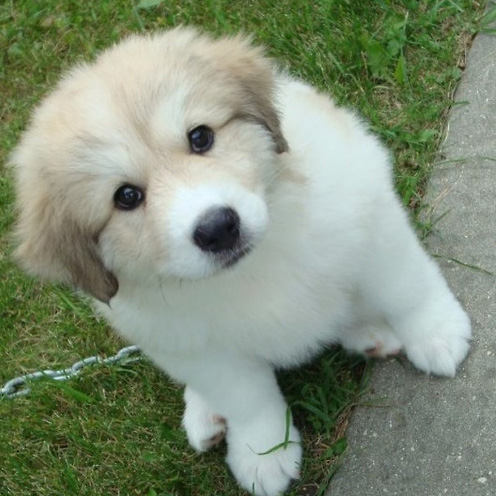What makes the Akbash Dog Unique?
The Akbash is large, strong and fast, as befits a dog whose job it is to guard valuable flocks of sheep. Native to western Turkey in the region known as the Akbaşh, it has been primarily used as a livestock guardian dog.
Breed Groups
Page Contents
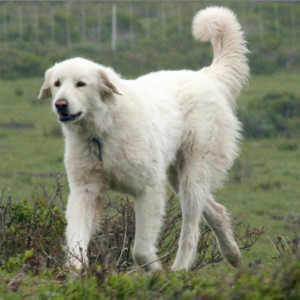
Is the Akbash Right For You?
The Akbash Dog is a large, all-white dog with dark eyes, nose and skin pigment. These dogs have a keen sense of sight, hearing and smell, are tall, long-bodied and long-legged, and can run with amazing speed. Females range in weight from 75 to 105 pounds, and are 27 to 30 inches at the shoulder. Males are generally between 95 to 125 pounds and 28 to 32 inches tall. The Akbash Dog is slow to mature and males may not reach full size until the age of three or more. Bitches over 110 pounds and males over 130 pounds are usually overweight. They are supposed to be lean, tall dogs with ribs just visible as they move.
In 5 Words
- Quiet
- Protective
- Watchful
- Chewers
- Good with Kids
Characteristics
Learn About the Akbash
Description
The Akbash Dog is a large, all-white dog with dark eyes, nose and skin pigment. These dogs have a keen sense of sight, hearing and smell, are tall, long-bodied and long-legged, and can run with amazing speed. Females range in weight from 75 to 105 pounds, and are 27 to 30 inches at the shoulder. Males are generally between 95 to 125 pounds and 28 to 32 inches tall. The Akbash Dog is slow to mature and males may not reach full size until the age of three or more. Bitches over 110 pounds and males over 130 pounds are usually overweight. They are supposed to be lean, tall dogs with ribs just visible as they move.
Size
Male Turkish Akbash Dogs are generally between 95 to 125 pounds and measure 28 to 32 inches tall, whereas females weigh between 75 to 105 pounds, and measure 27 to 30 inches in height from the shoulder.
Coat
The Akbash’s coat can be either medium or long, and always consist of a top and undercoat. The top layer is rough and longer than the bottom, while the under layer is softer and more dense. Like its length, the coat’s thickness also depends on the dog’s habitat and climate exposure. However, the hair on the mouth, ears, and feet area is usually always shorter than the rest of the body. The coat color is white with a bit of gray on the ears and in the undercoat. The skin may also have a slight blue-gray tone to it, and the outline of the eyes, as well as the lips and nose should be a dark color.
Short History of the Akbash
Little is known about the ancient origins of the Turkish Akbash Dog or its white guarding cousins. However, experts believe that the breed was developed in Turkey about 10,000 years ago as a livestock guard dog.
They differ from herding dogs in the way that they don’t herd, but rather become an integral part of the group and protect it whenever predators are near.
The name “Akbash” is Turkish and means “white head,” which adds to the theory that these dogs were specifically created to blend with the herd. This allowed the dogs to be less detectable, hence making them more efficient guard dogs.
Similarly, the “Karabash” dog (meaning “black head” in Turkish) is also thought to have been developed for the same purposes, except for their herd is typically black.
For centuries, these dogs were used by farmers to guard their livestock from predators such as wolves. It wasn’t until the 70’s that an effort was made by U.S. natives David and Judy Nelson in Turkey to have the breed recognized for their working skills. The pair studied the breed and decided to import about 40 dogs to the U.S. By the 80’s, the United States Department of Agriculture took an interest in the dogs and successfully incorporated them into the Predator Control Program.
Unfortunately, the dogs are not yet recognized by the AKC, but can participate in ARBA and IABCA shows. The UKC accepted the breed on January 1, 1998.
Temperament
The Turkish Akbash’s personality is widely based on its original purpose as a livestock guard dog. It is big and brave enough to scare off large predators, whilst agile and speedy enough to capture smaller, quicker predators. These dogs are often described of as being; independent, serene, patient, and protective.
They are also faithful and loving with their family, but tend to be naturally cautious with strangers and other animals that are not part of the “pack.” Despite of their independence, Akbash Dogs respond surprisingly well to socialization and obedience training. However, one thing that owners must keep in mind is that the breed matures at a much slower rate than other dog breeds, so patience is essential when going through the training process.
Caring for Your Akbash
General Health
Overall, Akbash Dogs are a healthy breed with low occurrences of genetically linked health conditions, especially in comparison to other large breeds.
Most of the conditions seen in the breed are orthopedic in nature, and include; hip dysplasia, osteochondritis dissecans, and patellar luxation. Other health issues commonly diagnosed in these dogs are; epilepsy, bloat, cardiomyopathy, osteosarcoma, lymphoma, umbilical hernia, and autoimmune thyroiditis.
Before getting a puppy, owners need to ask the breeder for proof that the parents have passed the OFA or PennHIP exam. Parents that have received clearance from these organizations are less likely to produce offspring with hip dysplasia or other hereditary orthopedic problems, depending on which tests were conducted. Routine exams, vaccinations, deworming, etc., should also be verified with the breeder.
Grooming & Bathing
The Akbash’s long, beautiful coat can be misleading when it comes to grooming because at first glance, it can seem as if they’d be high-maintenance; but in reality, they have a waterproof coat that doesn’t get soiled, wet, or matted easily. Brushing the hair once a week is enough to keep the coat tidy, clean, and tangle free.
However, it may have to be done more frequently when shedding occurs (two times a year) to minimize loose hairs. Baths can be difficult to accomplish due to the dog’s size. Fortunately, they don’t have to be given on a regular basis, and can be carried out outdoors.
Owners need to be careful not to bathe these dogs too often, as this can harm the coat and reduce its protective abilities. Additional grooming responsibilities that should be taken into consideration include; brushing the teeth/coat, nail clipping, and cleaning the ears/eyes.
Exercise & Training
Akbash Dogs have low activity levels and do not require much exercise. Nevertheless, they are not suitable for apartment life, as they need plenty of space to run around freely. This characteristic comes from the dog’s history as a guard dog, when it needed to move slowly with its herd and stay still for long periods when the flock was not moving, so that it could better protect them from predators.
Naturally, these dogs love to lounge around the house, but occasionally need to get rid of all the extra energy. They are large and fast, so a big, open environment is ideal for housing this breed of dog. Walking these dogs once a day is also helpful in keeping them happy and at ease.
Positive reinforcement is the training method of choice for Turkish Akbash Dogs, but some may require negative reinforcement once in a while to suppress dominant behavior. Negative reinforcement includes things such as making the dog perform obedience commands before getting meals or treats, using an assertive voice, and restraining the dog until submissive behavior is shown (licking, showing belly, etc.).
Owners must also be consistent with their training in order to develop an authority or “pack leader” figure. Last but not least, it is crucial that these dogs are socialized at an early age to prevent their territorial and protective nature from turning into aggression, as this can become a problem later on with strange people, pets, and new situations/environments.

